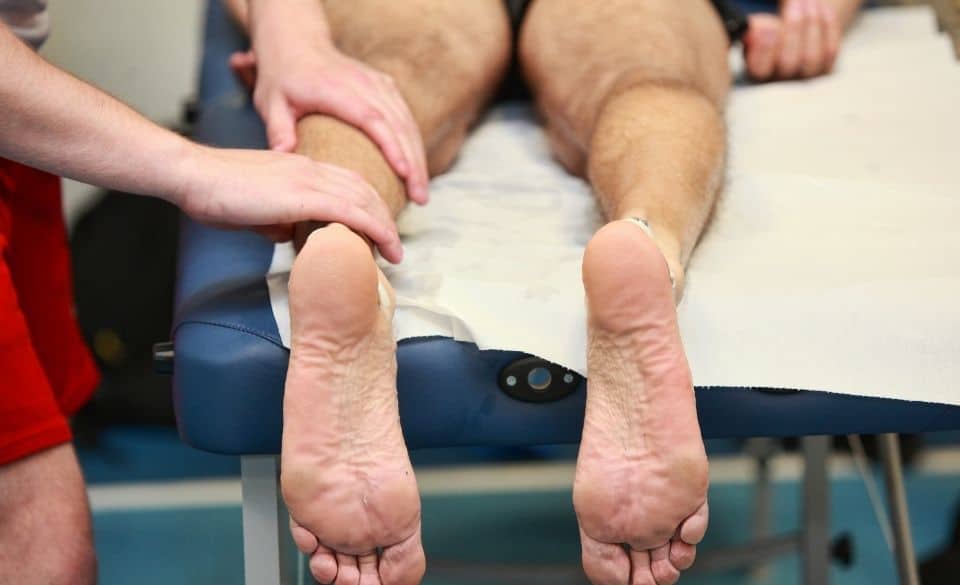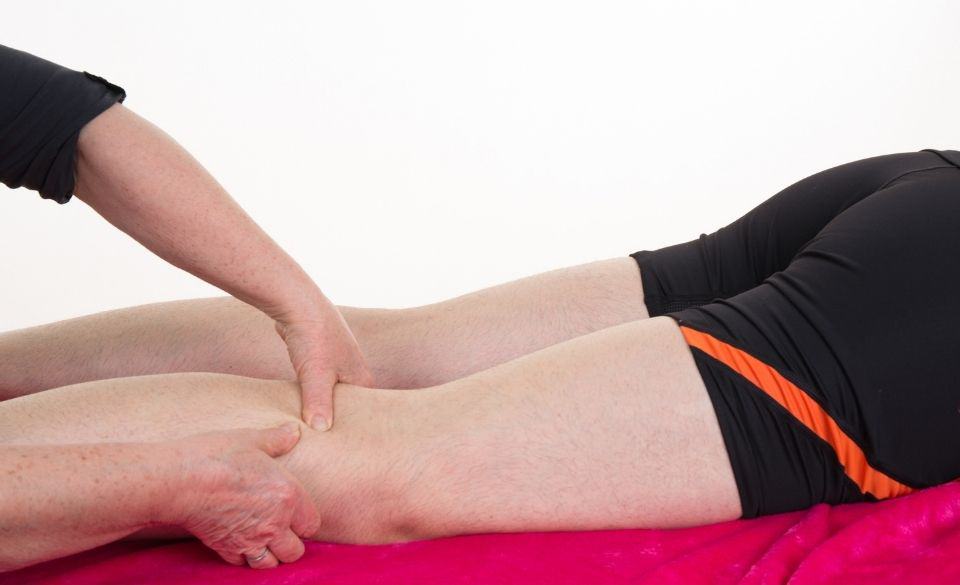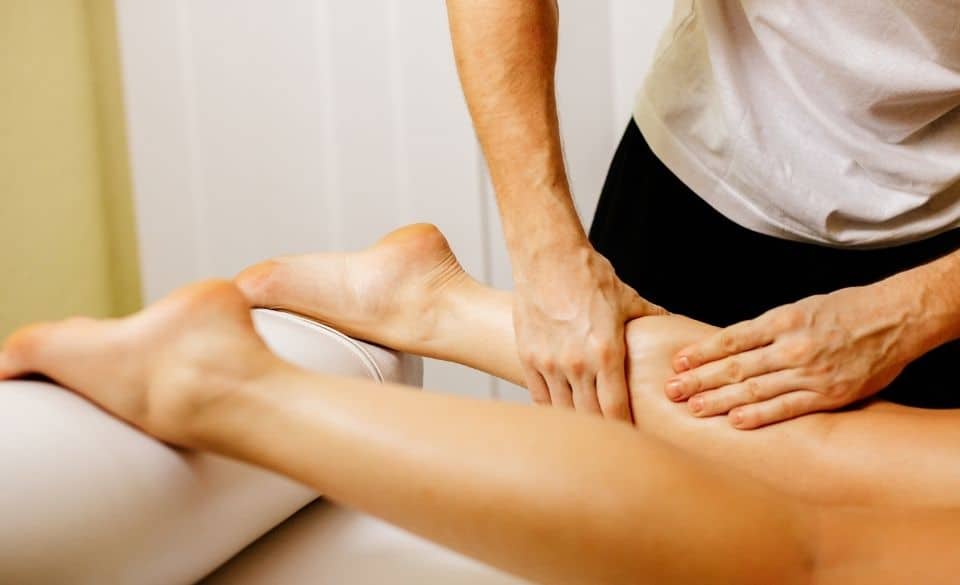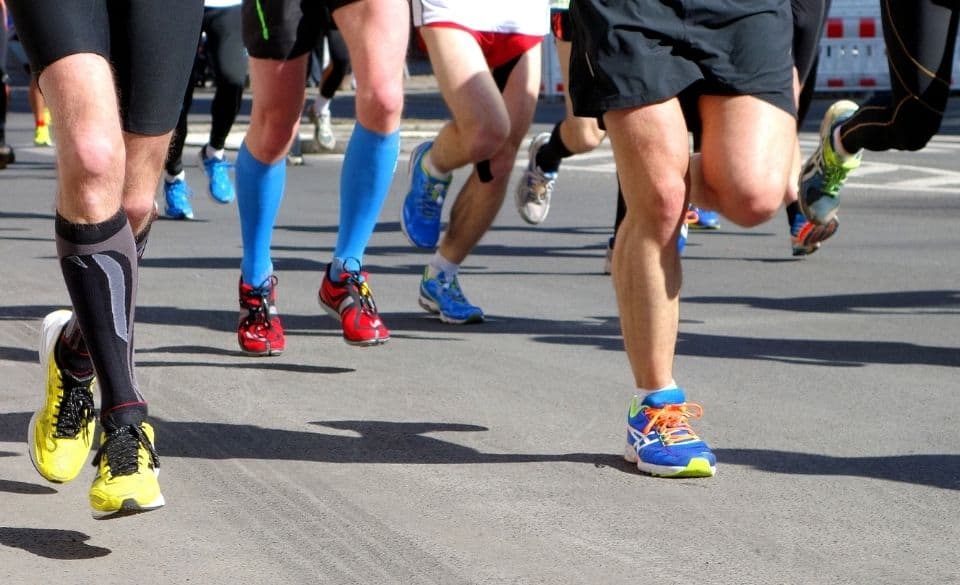
Massage For Runners – Guide To Trigger Point Therapy For Runners
Page Contents
Massages are quite popular among runners. It not only feels fantastic but it has also been shown to help with injury rehabilitation, muscular pain, injury repair, and recovery.
In this article, we look at why massage for runners is important, and why you should have one regularly. So, continue on reading if you want to improve your recovery time and overall fitness by speeding up recovery through deep tissue and trigger point therapy.
Massage For Runners – A Complete Guide
Massage for runners is one of the best ways to stay injury-free and healthy. However, there is a lot of confusion about the type of massage needed and how often you should have one.
To make this more difficult, Wikipedia lists 31 different types of massage, so it’s understandable that people get confused about the type of massage needed.
Luckily not all these types of massages are beneficial to the runner, so we put together the top 4 types of massage techniques for runners.
– Active release
– Swedish Massage
– Trigger point
– Deep tissue massage
Active release
Known as A.R.T. Active release massage technique combines movement and deep pressure to help break up muscle adhesions and lessen scar tissue build-up.
Active release massage is most commonly used when treating an injury, especially ones that have a lot of scar tissue build-up. This type of massage is commonly used when treating running injuries such as:
– Shin splints
– Hamstring injuries
– Plantar fasciitis
Swedish Massage
Swedish massage is most commonly known for relaxation and pampering. However, this massage technique is also beneficial to runners, especially before important events.
The Swedish massage technique involves long and flowing strokes along the muscle. This helps to release tension and improve blood flow.
While this form of massage is not designed to break up scar tissue, it’s more designed to help to relieve stress and improve blood flow without damaging the muscles. That means it is extremely beneficial between hard workouts, before competitions, and maintaining mobility during and after training.
Trigger point
Trigger point therapy is one of the most common forms of massage for runners. This type of massage technique targets muscle knots and areas deep in the muscle tissue.
This form of massage is used during big blocks of training, or as general maintenance where the body is full of adhesions. It is also widely used to treat injuries such as:
– ITB tightness
– Calf strains
– Shin splints
– Hamstring injuries
Deep Tissue Massage
Last on the list is deep tissue massage. This is the most commonly used term for runners getting regular massages. Deep tissue massage uses deep pressure that helps to break up the layers of muscle. However, unlike trigger point, it doesn’t focus on one certain area, but rather the whole muscle.
Since it focuses on entire muscles, it is used regularly by runners that often have tight spots, or are prone to muscle knots forming from regular training.

Trigger Point Therapy For Runners – Getting Started
As discussed above, trigger point therapy for runners involves deep pressure on a specific area of the muscle. Pressure is applied for a small amount of time and repeated until the muscle starts to relax.
Once the muscle is relaxed a masseuse would then move onto a deep tissue technique to help break up the entire muscle and facilitate blood flow.
Unfortunately for many runners, they either don’t have time or funds to allow for regular massaging. Luckily there are some ways for you to perform trigger point at home.
Companies such as Trigger Point Therapy (TP Therapy) provide tools to help you perform both deep tissue massage and trigger point techniques at home. These include:
– TriggerPoint GRID Foam Roller (Deep Tissue massage)
– TriggerPoint Foam Massage Ball (Trigger point massage)
– TriggerPoint MB2 Double Massage Ball ( Trigger point & deep tissue)
– TriggerPoint Channel Foam Roller (Deep Tissue)
While there are many more products on the market, TP Therapy offers some of the best tools to perform trigger point therapy.
To learn the basics of trigger point therapy for runners, follow the simple guidelines below:
1. Find tight spots or areas of the muscle that is extremely sore when pressure is applied.
2. Place your thumb or one of the tools we specified above on the area.
3. Apply pressure for 10-15secs. Each time apply slightly more pressure.
4. Repeat until the muscle relaxes. Then begin deep tissue massage using your hands or a foam roller. This will help facilitate blood flow to the area and flush out toxins.

Pre-Marathon Massage Techniques
If your planning to get a massage in the days leading up to a marathon it is important to choose the right type of massage.
Planning your massage before the event will ultimately depend on the pre-marathon massage techniques used. If you are planning to get a massage at least one week out, Deep tissue and trigger point therapy is the best solution. Both of these techniques will help to break up any muscle knots for your final taper.
However, if you are looking at getting a massage during the week of the event it is important not to go too deep. This will delay your recovery and may leave you sore and sluggish for a couple of days. So aim for a lighter massage that can help increase blood flow and relieve any tension in the muscles.
So knowing this it is best to follow the guidelines below:
Deep Tissue Technique: 7-14 days out from the marathon
Trigger Point Therapy Technique: 7-14 days out from the marathon
Swedish Massage: 2-7 days out from the marathon.
Active release technique: 5-14 days out from the marathon.
The above guidelines are just a general rule. Each person may need more or less time depending on the massage technique used. Often the runner that regularly gets massaged will recover much faster after a deep tissue or trigger point massage.

Massage Before Half Marathon – What You Should Know?
Just like pre-marathon massage, the timing of your massage before a half marathon is also important. Getting a deep tissue massage too close to the event can leave you sluggish and often sore. So it is important to factor in recovery time when booking in a massage.
The best time to get a massage before a half marathon is around 7 days. This allows adequate time for recovery and won’t affect your final tapering workouts too much.
Should You Get A Massage Before Or After Run?
Many runners are confused about whether they should get a massage before or after a run. Ideally, any form of deep tissue massage should be performed after a run rather than before. The increased blood flow and warmed-up muscles will allow the masseuse to get deeper into the muscle.
If any deep massage is performed before a workout it can often hamper the quality of the session. So it is best to get a light massage that can help increase blood flow before your workout and leave the deep tissue massaging to after your workout.
It is also important to remember after a hard workout you may need to allow the muscles to repair themselves before getting a deep tissue massage. Hard workouts place stress on the muscles and tendons and adding more stress in the form of a massage can end up delaying recovery time in some cases. However, this is very personal and trial and error is usually the best way to understand how the body reacts.




